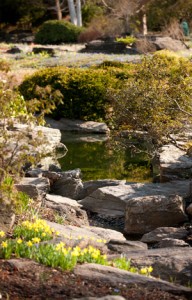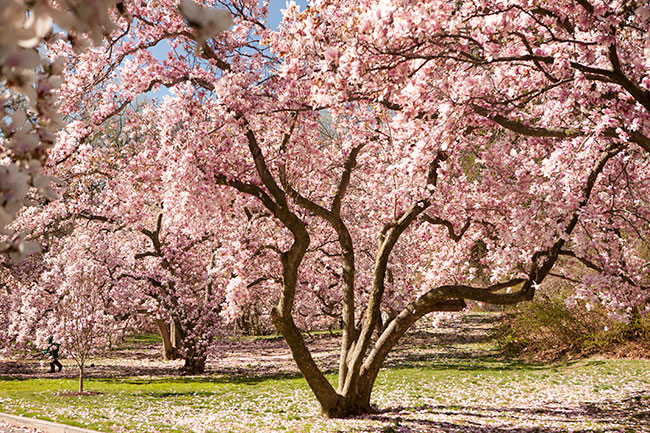Fashionably Late: Spring Flowers and Foliage are on the Way!
Posted in Around the Garden on April 8 2015, by Todd Forrest
Todd Forrest is the NYBG’s Arthur Ross Vice President for Horticulture and Living Collections. He leads all horticulture programs and activities across the Garden’s 250-acre National Historic Landmark landscape, including 50 gardens and plant collections outside and under glass, the old-growth Thain Family Forest, and living exhibitions in the Enid A. Haupt Conservatory.

Everyone in our area is well aware that climatologists have determined that this winter brought some of the coldest temperatures ever recorded in New York. The professional horticulturists who care for The New York Botanical Garden don’t need official weather data to confirm our suspicions that spring is coming later this year than it has in recent memory. All we need to do is walk through the Botanical Garden to see what our magnolias, daffodils, then flowering cherries and other spring-flowering favorites are doing at the moment. Gardeners’ (and plants’) internal clocks are set according to plant phenology—the timing of natural events such as flowering, fruiting, and leafing out—and all indications are that spring is overdue.
As staff members of one of the world’s great scientific and educational institutions, we have access to a suite of resources we can use to confirm (or deny) our suspicions. Since 2002 Volunteer Citizen Scientists have walked regularly through the Botanical Garden and noted carefully if certain plants are flowering, fruiting, leafing out, or dropping their leaves. The data from these “phenology walks” tell us that on average over the past decade, our native red maple, which is one of the most common street trees in New York and my favorite harbinger of spring, has been in peak flower around the middle of March. As of today, the flowers on the red maples in our Native Plant Garden and Thain Family Forest are just starting to open.
The red maples and decades of collective experience observing the plants in the Garden tell us that the normal progression of spring flowers—from magnolias, to daffodils, then cherries, crabapples, and so on—will be compressed and therefore April and early May will be even more spectacular than in a “normal” year. Temperatures in February and March were extremely cold, but the thick layer of snow protected our plants. The absence of a winter thaw may have deprived us of some respite from the cold, but it also prevented tender plants such as Japanese flowering apricot from breaking dormancy early only to be zapped when winter returned. Notwithstanding a hard April frost, we expect this will be a fantastic year for flowers.

The past few relatively warm days have been enough to entice crocus, reticulate iris, glory-of-the-snow, and other early spring bulbs in the Rock Garden to open. The Garden-wide spectacle of magnolias and flowering cherries will soon follow.
I invite each of you to plan your visit to the Garden today, and experience the eruption of new life that makes spring at NYBG so magnificent. Get your tickets for this very special blooming season—I hope to see you here!

